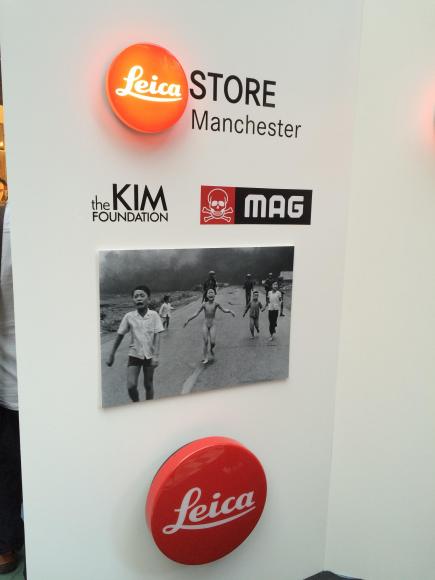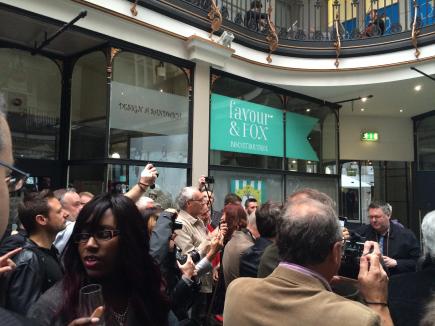It’s one of the most iconic photographs ever taken.
A naked girl, clearly in pain, running towards a camera down a potholed road surrounded by other children – her brothers and cousins it transpires – soldiers and plumes of smoke in the background.
It was named the second most recognisable picture of the 20th century but what about the story behind the picture?
The date was June 8, 1972. The shot was taken by a young Associated Press photographer named Nick Ut on Highway 1, close to the Cambodian border.
It shows a nine-year-old Kim Phuc running down a road near Trảng Bàng, Vietnam, after a napalm bomb was dropped on the village by a plane of the Vietnam Air Force.
She survived by tearing off her burning clothes and just seconds after the picture was captured, she passed out.
What has happened in the 43 years since it was taken is nothing short of incredible. Its authenticity was questioned by then-US President Richard Nixon but the image ultimately brought the war in Vietnam to a speedier conclusion, America witnessing the true horrors of the war first hand.
Nick went on to win the 1972 Pulitzer Prize while Kim went on – after years of struggle with the inner demons war brings about – to found a charity to help children in war.
On Friday night the pair were in Manchester, keeping a captive audience at the Barton Arcade opening of Leica Camera’s new city store entranced with their tale of how one picture sped up the end of the Vietnam war.
But for all the hope the picture brings today, the assembled audience of photography buffs, lecturers and press also got a glimpse into how that one frame of a moment in time almost drove Kim to suicide, convinced death was the only way to end the pain.

ICONIC: The shot Nick took of Kim ultimately helped speed up the end of the Vietnam war
Fighting back the tears, Kim – who now runs the Kim Foundation helping child victims of war – recounted how the 14 months she spent in hospital was just the start of a struggle which lasted more than 10 years before she found her peace.
She said: “I was so full of hate and bitterness. The Government used me for their propaganda and the more famous the picture became, the bigger price I paid with my private life.
“The picture was famous but I hated that picture, I hated it so much. I contemplated suicide. I thought that if I ended it then the pain would end.”
Kim had dreamed of being a doctor but, a pawn in the communist government’s game, she had to cut short her studies in Vietnam although her frequent trips to the library eventually led her to find the find the answer she had been looking for.
“I used to spend all my time in the library, reading books and searching for the answer to the question I’d been asking myself – why? Why me?
“I read hundreds of books and then I found the New Testament and I find my peace. Since 1982 I have had my faith.”
Eventually the government allowed Kim to go and study in Cuba. There she met Bui Huy Toan, another Vietnamese student, and the pair married in 1992.
On the way back from their honeymoon in Moscow, they left the plane while it was refuelling in Newfoundland in Canada and sought political asylum there, which was granted.
In 1992 she set up the Kim Foundation and was later named a Unesco Goodwill Ambassador for the Culture of Peace.
Now, it’s clear she is no longer running from the picture that haunted her for so long.
She said: “I’ve learned to accept the picture as a gift. I can use it to give hope to other people and to help people around the world.”

POPULAR: The pair were much in demand from those gathered for pictures, autographs and a chat
Of the picture itself, Nick says he first saw people running towards him and so a little boy die before Kim and her brothers and cousins – the majority of whom are still alive today – emerged from the smoke.
“My initial thought was ‘why doesn’t she have any clothes?'” he said. “So I picked up my camera and starting shooting. When she ran past me I put my camera down and went to help her.
“I thought she was going to die.”
The last four decades may not have happened though had Nick not been able to use his press status to ensure Kim got the medical treatment she so urgently required.
Upon arrival at the hospital, they were turned away.
But Nick said: “I showed them my AP press card and told them that if she died they’d be in trouble.
“They took her and some other children in because they didn’t want that to happen.”
As soon as he took the shot, he knew he had an image with the ability to change things.
But, picture in the can, the battle to get it published was about to start.
He said: “I knew I had the shot but the editors were ready to reject it because it showed full nudity. We argued to get it printed and that is why there was the delay.
“It made all the front pages and people could see what was really happening. Today, nobody gets those kind of shots in the wars.
“It helped stop the war and I am so glad.”
Earlier in the evening, Sean Sutton from Manchester-based charity the Mines Advisory Group (MAG) showed those gathered a collection of his own pictures of the work the charity does.
The Leica store also held a private exhibition to mark the opening of its new store.



